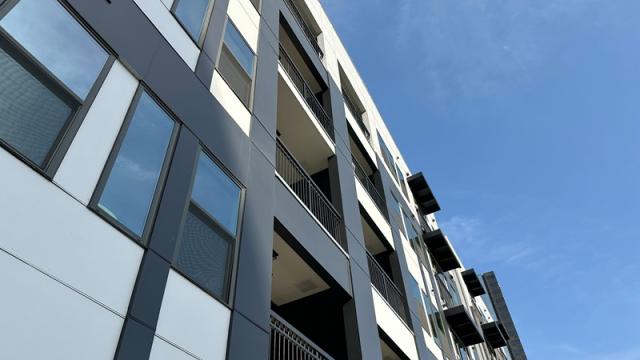webinar

CoStar Group


Apartments.com

Tough Multifamily Market Conditions Marked by Persistent Inflation, Growing Supply, and Weakening Demand
With the COVID-19 pandemic in the rearview mirror, the U.S. economy and multifamily industry are still recovering from its impacts and expected to face additional challenges ahead.
“Overall, 2023 will remain a challenging year for the multifamily sector,” said Jay Lybik, National Director of Multifamily Analytics for CoStar Group, in a recent analysis of the state of the market alongside Christine Cooper, CoStar Managing Director and Chief U.S. Economist.
Lingering inflation takes a toll on businesses and consumers
At the macroeconomic level, the skyrocketing inflation of 2021 and 2022 has begun to cool down. After peaking in June 2022 at 9.1 percent, inflation, as measured by the consumer price index, was down to 5 percent in March. Similarly, the core index, which excludes food and energy, has dropped from previous heights to 5.6 percent.
“While still elevated, it looks like we’re on the right path in regard to inflation,” Cooper said.
Cooper noted that shelter costs in the price index continue to rise, even as housing prices and rents moderate, while labor-intensive services have been “wobbling around at the same rate for two years,” Cooper said. This has driven the Federal Reserve to raise interest rates 475 basis points over the last year.
As a result, lending rates for consumers and businesses have risen, with banks tightening requirements for borrowers. The recent banking crisis has further exacerbated this trend.
For consumers, interest rates on credit cards and car loans have surged, which has in turn driven down consumer spending.
On the commercial side, businesses have cut back on investments, and manufacturing activity has slowed since 2021 and fell into recession last fall. Travel and entertainment have proven more resilient but are likely to follow the same trajectory this year.
The overall slowdown is starting to show in the labor market, which in March saw the smallest job growth since December 2020, and has been marked by increasing layoffs and unemployment.
Recession ahead
These signs indicate that the U.S. is likely to fall into recession this year, Cooper said, though she offered reassurance about the extent of its impact.
“It’s not expected to be deep, contracting around 1 percent from peak to trough,” Cooper said, “which might look more like the recession of 1991, not anything like the 4-percent drop during the Great Financial Crisis.”
Excess supply combines with a drop in demand
On the multifamily front, Lybik highlighted the weak fundamentals that will slow growth in the months ahead.
A record number of new construction multifamily properties are set to deliver in 2023. These totals will reach highs not seen since the 1980s, with 500,000 new units expected to arrive this year, and elevated deliveries likely to continue into 2024.
This boost in supply will arrive just as demand is shrinking. Driven by economic uncertainty and the pressures of inflation, renters are trimming their budgets, with some even seeking alternative housing options, like moving in with parents or roommates.
Rent growth decelerates as vacancies rise
Nationwide, the vacancy rate has risen from its low of 4.7 percent in the third quarter of 2021 to 6.7 percent today, a shift of 200 basis points. And the trend is expected to continue.
The national vacancy rate will reach the mid-7 percent range by year’s end, Lybik said, which is 100 basis points higher than it was prior to the COVID-19 pandemic.
Properties will see a disparate impact by building rating. The four- and five-star properties that enjoyed the greatest rent growth over the past few years will now see the highest vacancies, with an expected vacancy rate of 9.8 percent for the year, Lybik said, as they compete with a flood of top-of-the-market properties coming online.
This rise in vacancies will decelerate, or even reverse, rent growth. One- and two-star properties are expected to see 1.5 percent rent growth, while four- and five-star experience 1.6 percent. The least dramatic deceleration is expected for three-star properties, which are expected to see a rate of 3.1 percent.
Top regional markets swap places
Regional trends have reversed, with Sun Belt rent growth cooling from sky-high levels “back to earth,” Lybik said.
This reversal has hit Phoenix and Las Vegas especially hard, with these formerly hot markets now showing negative rent growth, a trend expected to worsen as new supply becomes available. Austin, another previously overheated market, is facing the prospect of a whopping 18,000 units coming online.
The current challenges have proven a boon for the Midwest market, with cities such as Indianapolis, Cincinnati, Columbus, and St. Louis leading the nation in rent growth.
Challenging year overall
Looking ahead, the headwinds of high inflation, an imbalance between supply and demand, and economic uncertainty will continue to weigh on the multifamily market through at least the end of the 2023, Lybik said.







